The United Nations Human Rights Council has recently released a report on the war involving Israel and Gaza last year. The summary in the press release is that there are “credible allegations” of war crimes by both “Israel and Palestinian armed groups”.
In the coming days and weeks, there will be plenty of analysis and commentary on the report, it’s significance, the context and so on. I will probably comment on the fallout of the report too. In this article, I’m just going to comment on the report itself. My view is that the report is a very weak document, which meekly qualifies and hedges every allegation against Israel, and avoids reaching any strong conclusions.
As a report based on 11 months work, it is also singularly unimpressive. The Goldstone mission was established by the HRC in April 2009, and released its report in September 2009. The McGowan-Davis commission was created in July 2014. It released its report in June. The Goldstone Report is 452 pages, and is based on a first-hand study of Gaza, public hearings, and the review of a vast body of literature, including numerous reports by human rights organisations, creating a vast, if non-exhaustive overview of human rights violations in the 22 days, as well as human rights violations more generally by the Israeli government and Palestinian groups.
Admittedly, the Goldstone mission had four members: the McGowan-Davis commission had only two after William Schabbas pulled out, leaving her and Doudou Diène. The McGowan Davis report is only 183 pages, despite covering a war that lasted twice as long. The commission “conducted more than 280 interviews with victims and witnesses and received more than 500 written submissions”, and reviewed other publicly available sources. The result of this research is underwhelming.
The Goldstone mission was able to visit Gaza through Rafah, because of cooperation from the Mubarak regime. However, Israel barred it from visiting the West Bank or Israel. This commission was similarly prevented from visiting the West Bank or Israel by the Israeli government. However, in a new development, the Egyptian government, now under a new tyrant, prevented the commission from making it into Gaza. The closest it came to the conflict was two trips to Amman in Jordan. Even the puppet Hashemite monarchy of Jordan shows more independence and compassion for the Palestinians than the Sisi dictatorship.
The report can be accessed from this page. It also features some infographics, and satellite images of the destruction in Gaza City, Shuja’iya, and Khuzza’a. The satellite images aren’t new, but are terrible, and show some of the immense destruction Israel unleashed on Gaza. Many satellite images and pictures of the destruction are available online, and are more worthwhile guides to the destruction than this report.
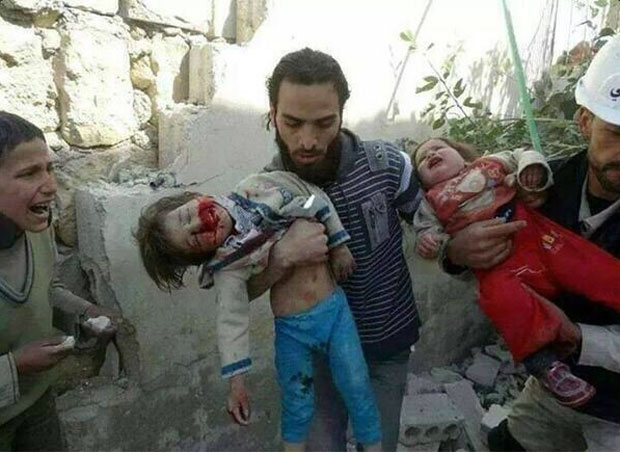
The non-cooperation from the Israeli government also showed in this report. In 2009, the Goldstone Report carefully investigated dozens of incidents, contrasting the official claims of the Israeli government with on the ground refutations of what happened. The commission did no such thing. There were no smoking guns, and only in a handful of cases does the report even suggest that its evidence refutes the claims of the Israeli government.
Mostly, it notes that the Israeli government has not accounted for what happened, and, requests further information from Israel, lamenting its lack of cooperation. The report (Paragraph 681 – all references in brackets will be to paragraphs in the report) cheerfully calls on Israel to cooperate with human rights bodies such as itself in the future, investing great optimism in the Israeli government showing greater respect for international law and human rights in the future.
The commission, like the Goldstone mission, fails to investigate whether Israel’s resort to the use of force was legal. Like the Goldstone report, it sets out the context. However, as a less serious report, it does so far more briefly (53-8). It notes that the fighting “erupted in the context of the protracted occupation of the West Bank, including East Jerusalem, and the Gaza Strip, and of the increasing number of rocket attacks on Israel.”
It also condemns the blockade (54), noting
“The blockade of Gaza by Israel, fully implemented since 2007 and described by the Secretary-General as “a continuing collective penalty against the population in Gaza” (A/HRC/28/45, para. 70), was strangling the economy in Gaza and imposed severe restrictions on the rights of the Palestinians… Palestinians have demonstrated extraordinary resilience in recent years, living in an environment scarred by physical destruction and psychological trauma. In the West Bank, including East Jerusalem, settlement-related activities and settler violence continued to be at the core of most of the human rights violations against Palestinians. In the absence of any progress on the political front, the risk of a flare-up of the situation was evident.”
Compare this to the Goldstone Report, which set out human rights violations in the occupied territories (and even in Israel) at far greater length, and also documented at length the effects of the blockade, which it argued could be a “crime against humanity”.
This commission didn’t find any crimes against humanity, and only seems to have found one war crime which it unequivocally recognised as a war crime (501-2): the extra-judicial execution of alleged Palestinian collaborators by other Palestinians. “Whoever is responsible”, the report says, “must be brought to justice.” All the other war crimes are expressed in hedged terms. For example, that if something is the case, and is proven, then it may amount to a war crime.
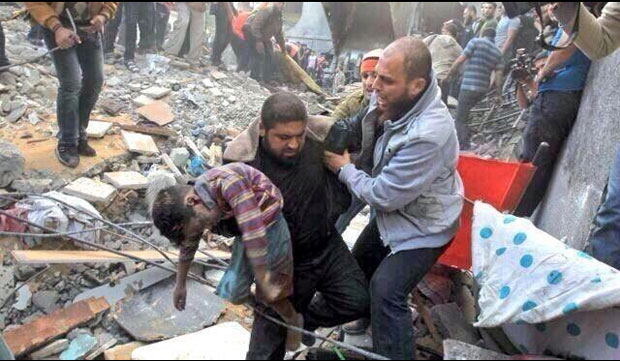
Because the report conducted no first-hand investigations, there is essentially nothing new in the report. In the first 52 paragraphs, it sets out the mandate, its methodology, and the framework of international law. From paragraphs 59-502, it looks at Israel and Gaza, and from 503-550 it looks at the West Bank, including East Jerusalem. It “selected incidents” on “the basis of certain criteria”, meaning that the chronicle of human rights violations is not intended to be comprehensive. The coverage of the West Bank is essentially devoted to human rights violation during the fighting, without attempting to provide an overview of broader human rights violations as part of the occupation.
Most of the report is about Israel’s attack on Gaza. The section on Israel and Gaza takes up paragraphs 59-502, out of 685 paragraphs. Paragraphs 59-103 look at rockets and mortars fired from Gaza into Israel. Though acknowledging (60) that the military wing of Hamas claimed it would “focus on military or semi-military targets and to avoid other targets, especially civilians”, and similar declarations, it also notes evidence of public admissions that they were targeting civilian areas with rockets (90). Israel says 4,500 projectiles were fired at Israel, whilst the UN interestingly had a higher figure of “4,881 rockets and 1,753 mortars”.
The commission interestingly analyses warnings given by Hamas, and weighs these up against the standards of international law. Whilst acknowledging they had limited means for reaching the Israeli public (95), the commission observes that issuing a warning doesn’t absolve a party from its obligations to avoiding civilian suffering (96).
The Goldstone Report observed that Palestinian Bedouins in Israel lived in villages that Israel didn’t recognise, and so no shelters or early warning systems have been built for them. In the last six years, this hasn’t changed. On 19 July (69), Hamas fired a rocket that killed a Bedouin and injured 3 others in the settlement of Kaser Al-Ser. Though it was recognised by Israel in 1999, its “infrastructure remains rudimentary and it is threatened by demolition. According to Amnesty International, the family did not receive compensation from the authorities after the attack because the victim’s home was due to be demolished anyway.”
Next, the commission looks at the tunnels from Gaza. The Israeli army claims to have found 32, “14 of which extended beyond the Green Line into Israel” (105). The report claims (106) that this caused “great anxiety” for Israelis, as “the tunnels might be used to attack civilians”. The report notes (108) that “the tunnels were only used to conduct attacks directed at IDF positions in Israel in the vicinity of the Green Line, which are legitimate military targets.” Five more references to “anxiety” in the report all also refer to Israelis, 581 of whom reportedly had anxiety attacks during the attack.
Most references to “fear” in the report also refer to Israelis, though some references are made of Palestinian fears (104, 202, 305-6) of being killed, not having sanctuary from the bombing, and fear of Hamas authorities retaliating against its critics, such as in relation to executions of collaborators (499). Evidently, the commission found it harder to understand how Palestinians felt, or simply thought it too trivial to investigate.
Then there is the analysis of the attack on Gaza (110-465). There is a section on the bombing on residential homes (110-224). This has already been done, and done better by Israeli human rights organisation B’Tselem. There is a useful table (214) summarising the commission’s findings:
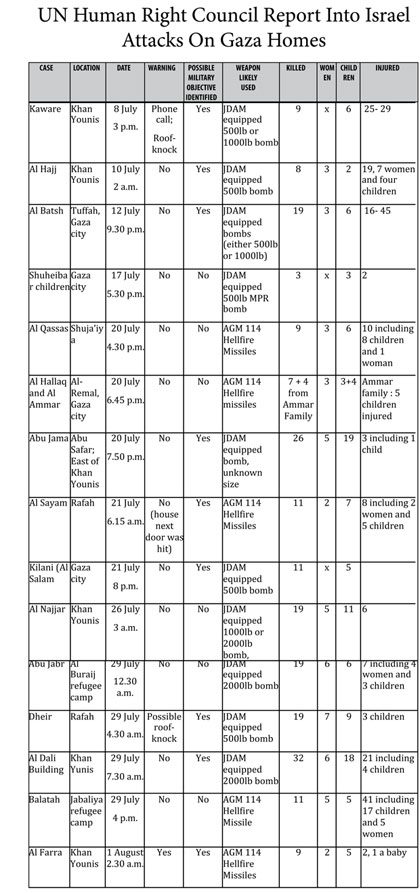
That’s a total of 216, of whom 115 were children and 50 were women.
The report notes (111) that Israel carried out “more than 6,000 airstrikes in Gaza” during the conflict. In one incident, Israel bombed a home, completely destroying it and damaging adjacent buildings. The attack (153-4) “killed 15 members of the Abu Amr family, 7 members of the Breikah family, 7 members of the Al-Najjar family, and 4 of the Mu’ammar family.” That is, Israeli bombing killed entire families at a time. Mostly, the investigations are superficial, and no strong conclusions are ever drawn from the factual patterns discovered by the commission.
Like the Goldstone Report, the commission found instances of Israeli military leaders admitting they would bomb civilian targets, but failed to draw any conclusions from these admissions (207, 212). It also notes the bombing of four large buildings at the end of the war (210-2). With all this death and destruction, it winds up with conclusions (220-30) no stronger than “strong indications that these attacks could be disproportionate, and therefore amount to a war crime”, “Should attacks have been directed against buildings that did not constitute a military objective this may amount to a war crime”, “Attacks, which used this type of weapon in densely populated, built up areas of Gaza, are therefore likely to constitute a violation of the prohibition of indiscriminate attacks”, and “strong indications that the IDF failed in its obligations to take all feasible measures to avoid or at least to minimize incidental harm to civilians.” Or “may have breached its obligations to take all feasible measures to avoid or at least to minimize incidental harm to civilians.”
And attacks which killed numerous children to neutralise “a purported member of an armed group… could be deemed disproportionate.” Unless “the anticipated military advantage” would have made those deaths “not excessive”.
The report then looks at ground attacks, and their effect on Shuja’iya (twice), Rafah, and Khuza’a. It features accounts of Palestinians being used as human shields by Israeli soldiers(321-3). For example
“His son was forced to undertake “risky tasks such as opening doors, inspecting rooms, switching the lights on and off to test whether secret explosives were being connected to the light switches, open fridges and other devices that may have detonated explosions.” The boy was also forced to look for tunnels in basements and to sleep with the soldiers at the checkpoint. The soldiers also threatened to unleash their dog on him and forced him to dig for tunnels.”
Or this:
“The men were naked with black plastic bags over their heads, handcuffed and positioned in front of the windows facing outwards. The soldiers then started shooting from behind the naked men, using them as human shields. This went on from about 1.30 to 6 pm.”
The Israeli army showed its traditional respect for Palestinian dignity (325), when 10 soldiers forced their way into a Palestinian house. The
“Soldiers handcuffed his son who has a mental disability. The soldiers subsequently put a casserole on the boy’s head and four of them started kicking and punching him. Then one of the soldiers began shooting between the legs of the boy. After a while, they took him away. When the witness asked the soldier to leave his son alone, the soldier apparently responded by saying, ‘shut up or we will take you.’”
The report’s strongest denunciations come in discussion of the destruction in relation to the ground offensives. The report notes (408) the sheer amount of firepower directed at Gaza:
“14,500 tank shells and approximately 35,000 artillery shells were fired. Haaretz quoted IDF information indicating that, before the end of July, after three weeks of fighting, 30,000 shells had been discharged, “four times as much as in Cast Lead in 2008”. The NGO “Action on Armed violence” (AOAV) observes that, while in Operation Cast Lead in 2008, 3000 high-explosive artillery shells were fired, in 2014 there were 19,000, a 533 per cent increase. Based on figures suggesting that over the course of 2014’s 50-day operation, a daily average of 680 artillery shells were fired in Gaza by the IDF (compared to 348 per day in the 2008-09 operation)…”
The report concluded that “the use of weapons with wide-area effects by the IDF in the densely populated, built up areas of Gaza, and the significant likelihood of lethal indiscriminate effects resulting from such weapons, are highly likely to constitute a violation of the prohibition of indiscriminate attacks.” And, because there can never be too much hedging, if there were certain “circumstances, such use may qualify as a direct attack against civilians, and may therefore amount to a war crime.”
The report observes that (418)
“the vast scale of destruction may have been adopted as tactics of war. While the protection of IDF soldiers and the destruction of tunnels may have played a legitimate role in this, nonetheless the concentration of the destruction in areas close to the Green Line (which, in some places, amounted to up to 100 per cent); and the systematic way in which it appears to have been implemented subsequently in Beit Hanoun on 18-19 July, Shuja’iya on 20 and 21 July, and Khuza’a between 20 July and 1 August suggest that the IDF followed a pre-calculated pattern of wide-spread razing of neighbourhoods in certain areas.”
A suitably hedged conclusion is drawn: “the razing of entire areas of these localities by artillery fire, air strikes and bulldozers indicates that the IDF carried out destructions that may not have been strictly required by military necessity.” Thus, “The wholesale levelling of certain areas of Gaza by the IDF, should it qualify as “unlawful” and “wanton”, may amount to a war crime.”
The Goldstone Report discussed at length Israeli officials committing to a policy of causing massive death and destruction to civilian areas, and connecting this to Israel’s military conduct. The new commission does no such thing, and mostly ignores damning material on Israel’s conduct, in particular, the Breaking the Silence report which compiled testimonies by Israeli soldiers about war crimes in Gaza.
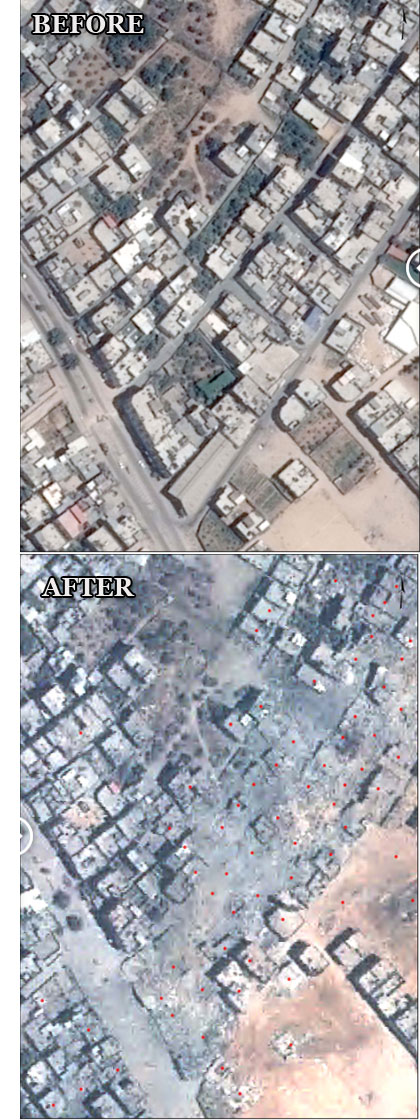
The report (420) also examined “two incidents, in which civilians, including children, allegedly carrying white flags were fired upon by soldiers”. In one incident, a man holding a “white flag with one hand and his other hand was raised to show the soldiers that he was unarmed.
He reportedly spoke to the soldiers in Hebrew, telling them that they were all civilians. Mohamed Tawfiq Qdeih was approaching the soldiers and, when he was about two meters away, the soldiers shot him twice and killed him” (322). What conclusion should be drawn? “Directing attacks against civilians constitutes a violation of the principle of distinction and may amount to a war crime.” So even murdering civilians knowingly might be a war crime, or it might not, when the perpetrator is Israel.
The report then discusses other atrocities, like bombing UN shelters (eg 425, 430-1), or the four occasions (451) on which the only power plant in Gaza was bombed.
After observing that Israel has bombed it twice in the past, and that the Deputy Defence Minister of Israel called on Israel to cut off Gaza’s electricity supply at the start of the war, the report naturally observes that “it is unable to determine whether the power plant suffered incidental damage from an attack directed elsewhere, or whether it was the object of a deliberate attack.” However, it duly chastened Israel, which “appears not to have complied with its obligation to take all feasible precautions to avoid or at least to minimize incidental damage to civilian objects” (454-5)
The report notes that Israel bombed ambulances and medical personnel on “at least 24” occasions, and claimed that ambulances were being used by Palestinian fighters (461-2). The report politely notes that it is “unable to verify this claim”, and then writes “Some of the incidents above constitute a violation by the IDF of the prohibition of attacks on medical transports and medical personnel, and may amount to war crimes…” Because Israel indicated that it regarded ambulances as valid military targets, and repeatedly bombed them, and ambulances “enjoy special protection under international humanitarian law” and “are to be protected from attack under all circumstances”, who knows if war crimes were committed here?
As for Palestinians, the commission couldn’t tell if they fought near civilian and protected areas (478-9). It condemns the summary executions of at least 21 collaborators (494), and even worries about the “stigma” (499) that attaches to them and their families. The report expresses less interest or concern (507) about “a rise in extreme anti-Palestinian rhetoric by some Israelis, notably in social media, inciting revenge and hatred against Palestinians; as well as reported harassment; and sometimes, attacks on Palestinians and damage to businesses employing Palestinians.”
The report then examines the “impact” of the fighting. It rather boldly claims “Palestinians and Israelis were profoundly shaken by the events of the summer of 2014 and many witnesses described the trauma that resulted from the violence they experienced. In particular, children on both sides were savagely affected by the events.”
The report then (inadequately) chronicles the impact of the war on both sides. Israel, as it so often does, did its best to overstate the suffering and destruction it experienced. Thus (569), “4,550 claims for compensation for direct damages” were made. The “tax authority estimates that total compensation for direct damages will reach approximately USD $25 million (100 million NIS). Indirect damage is estimated at $440,000,000 USD (1.7 billion NIS).” That is, $25 million in damage from rockets fired at Israel, which indirectly caused $440 million damage.
No query is made of the methodology producing this result. No mention is made of the actual number of buildings damaged or destroyed in Israel by Palestinian rockets and mortars, which might shed some light on Israel estimates of the destruction and damage it suffered during the war.
In Gaza (574-89), “the scale of the devastation was unprecedented. The death toll alone speaks volumes: 2,251 Palestinians were killed, including 1,462 Palestinian civilians with 299 women and 551 children. 11,231 Palestinians, including 3,540 women and 3,436 children, were injured with almost 10 per cent suffering permanent disability as a result”.
Furthermore, “there was enormous destruction of civilian property in Gaza: 18,000 housing units were destroyed in whole or in part. According to the Office of the Special Coordinator for the Middle East Peace Process, an estimated 80,000 homes and properties need to be rehabilitated”. In May 2015, about 100,000 Gazans remain displaced.
Attacks on Gaza infrastructure “increased the pre-existing electricity deficit by almost 20 per cent, reaching about 65 per cent”. Israel also damaged “63 water facilities… and 23 [were]completely destroyed. Key sewage facilities were partially destroyed, including 60 per cent of the treatment plants, 27 per cent of the pumping stations, and 33,000 meters of water and wastewater networks were damaged”.
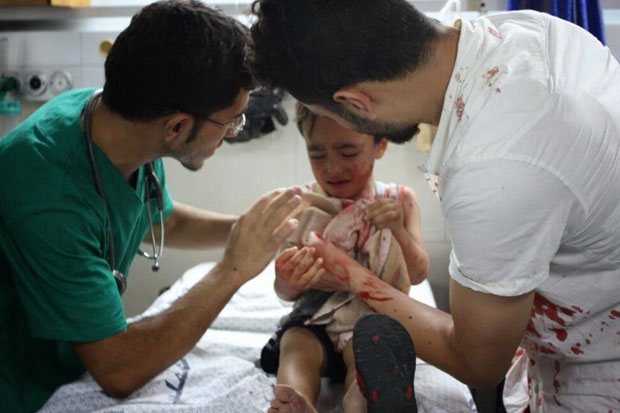
According to the World Bank, “unemployment in the Gaza Strip is now the highest in the world… Post-traumatic stress disorder and other stress-related symptoms have increased, and about 20 per cent of the population are estimated to be in need of long-term mental health assistance, among them at least 373,000 children”.
The report then summarises the impact (597-600). After noting the “enormous impact” on Palestinians and Israelis (!), it continues:
“The impact of the 2014 hostilities on the Gaza strip cannot be assessed separately from the blockade imposed by Israel. In particular, the destruction and damage brought about by the escalation of violence last summer pose significant challenges to the enjoyment of the rights to an adequate standard of living, housing, food, water, sanitation, health and education of the population of Gaza. The damage to electricity infrastructure, critical for power supply and a whole range of services, including health services, water and sanitation has been devastating for the enjoyment of human rights in the short, medium and long-term.”
The report then has a long section (607-51) discussing Israel’s internal mechanisms for investigating alleged war crimes. Amazingly, shamefully – and this is important, because it will be a major talking point for the Israeli government and its apologists – it notes:
“In recent years, Israel has taken significant steps aimed at bringing its system of investigations into compliance with international standards. The Turkel Commission, itself an initiative of the Government of Israel, has helped to give momentum to these efforts, and has provided concrete recommendations as to how to go about it, a number of which have already been implemented by Israel.”
B’Tselem and Yesh Din refuse (609) to cooperate with Israeli military investigations of human rights violations, due to their proven track record, and derisory investigations into the many complaints they have made over the years. After long, ridiculous waffling, the report finally (664) says:
“The commission is concerned that impunity prevails across the board for violations of international humanitarian and human rights law allegedly committed by Israeli forces, whether it be in the context of active hostilities in Gaza or killings, torture, and ill-treatment in the West Bank. Israel must break with its recent lamentable track record in holding wrong-doers accountable, not only as a means to secure justice for victims but also to ensure the necessary guarantees for non-repetition.”
It even approached something like passion – I suspect written by Diène – concluding (666) “Palestinian victims are systematically denied their right to effective remedies and reparation due to an array of obstacles. Victims – in some cases repeatedly suffering violations in recent years – have a right to know the truth and to receive restitution.”
Then there are concluding observations (668-75): “The commission was deeply moved by the immense suffering of Palestinian and Israeli victims, who have been subjected to repeated rounds of violence.” As readers might skip to conclusions, it is naturally important to stress that both sides have experienced “immense suffering”.
Unwilling to commit to any conclusions, the report explains that “The onus remains on Israel to provide sufficient details on its targeting decisions to allow an independent assessment of the legality of the attacks conducted by the Israel Defense Forces and to assist victims in their quest for the truth.” Working itself up to a strong conclusion, the report says:
“The commission’s investigations also raise the issue of why the Israeli authorities failed to revise their policies in Gaza and the West Bank during the period under review by the commission. Indeed, the fact that the political and military leadership did not change its course of action, despite considerable information regarding the massive degree of death and destruction in Gaza, raises questions about potential violations of international humanitarian law by these officials, which may amount to war crimes. Current accountability mechanisms may not be adequate to address this issue.”
Also,
“Questions arise regarding the role of senior officials who set military policy in several areas examined by the commission, such as in the attacks of the Israel Defense Forces on residential buildings; the use of artillery and other explosive weapons with wide-area effects in densely populated areas; the destruction of entire neighbourhoods in Gaza; and the regular resort to live ammunition by the Israel Defense Forces, notably in crowd-control situations, in the West Bank. In many cases, individual soldiers may have been following agreed military policy, but it may be that the policy itself violates the laws of war.”
So there you have it. There are “questions” about Israel destroying entire neighbourhoods, and bombing densely populated areas with immense firepower. “Israel must break with its recent lamentable track record in holding wrongdoers accountable”. The Palestinians get firmer criticism as they “consistently failed to ensure that perpetrators of violations” were stopped. The rocket fire “may amount to a war crime”.
In the recommendations (676-85), the report is brief, not wanting to “repeat” previous recommendations. It calls on Israel to review some of its military policy, “immediately and unconditionally” end the blockade on Gaza, cooperate with human rights investigators, sign the Rome Statute (to give the International Criminal Court jurisdiction), and change how it investigates human rights violations.
It urges both parties to “cooperate fully with the preliminary examination of the International Criminal Court and with any subsequent investigation that may be opened.” It also urges Israel to stop “all settlement-related activity”, and obey the International Court of Justice’s advisory opinion from 2004 on the West Bank wall.
The most significant recommendation to the international community is “To support actively the work of the International Criminal Court in relation to the Occupied Palestinian Territory; to exercise universal jurisdiction to try international crimes in national courts; and to comply with extradition requests pertaining to suspects of such crimes to countries where they would face a fair trial.”
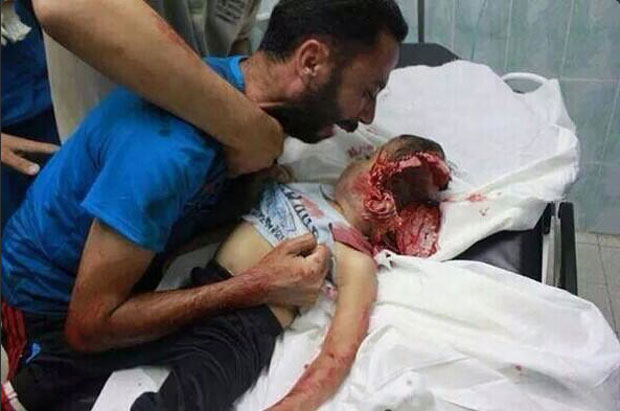
Which probably won’t happen. After all the death and destruction, the Human Rights Council has produced an unbelievably mild and tame report on what Israel did, and is doing to Gaza. It probably won’t produce the political momentum necessary to put pressure on Israel. With all its qualifications and provisos – and the credit it unbelievably gives to Israel for its “significant steps” in improving its investigations of its military, despite its “recent lamentable track record” – Israel has gotten off pretty lightly.
It should be pleased that it was able to get Schabbas to resign from the commission.
On the other hand, these types of reports are rarely ever read by anyone. The take-away message will be similar to that of the Goldstone Report – that both sides stand accused of committing war crimes. The moderation of the report will make it harder for Western media to take seriously that it’s an anti-Israel diatribe, though one can never overestimate the cowardice of Western media.
Barak Ravid reported for Ha’aretz, “It’s hard to portray McGowan Davis as anti-Israel. A few years ago, when she headed a committee dealing with the implementation of the Goldstone report on Operation Cast Lead in Gaza, Israel decided not to boycott her and to cooperate with her on a limited basis. The report that McGowan Davis issued at the time was balanced; Jerusalem received it with satisfaction.”
This time Israel boycotted her, which was probably a tactical mistake from their point of view. Yet the International Criminal Court has only ever prosecuted Africans. The report stresses the need for effective accountability mechanisms to prevent the next round of hostilities. Yet its wishy-washy tone and general meekness make it unlikely anything of the sort will happen.
Just as Goldstone’s semi-retraction gave a green light for Israeli massacres in 2012 and 2014, so this lousy report, based on almost a year’s work, signally fails to give a red light to Israel.
Given the “scale of the devastation”, what can one say? The report is a despicable betrayal, and spits in the face of the Palestinians who hoped their testimonies would be treated with compassion by the UN.
Donate To New Matilda
New Matilda is a small, independent media outlet. We survive through reader contributions, and never losing a lawsuit. If you got something from this article, giving something back helps us to continue speaking truth to power. Every little bit counts.





